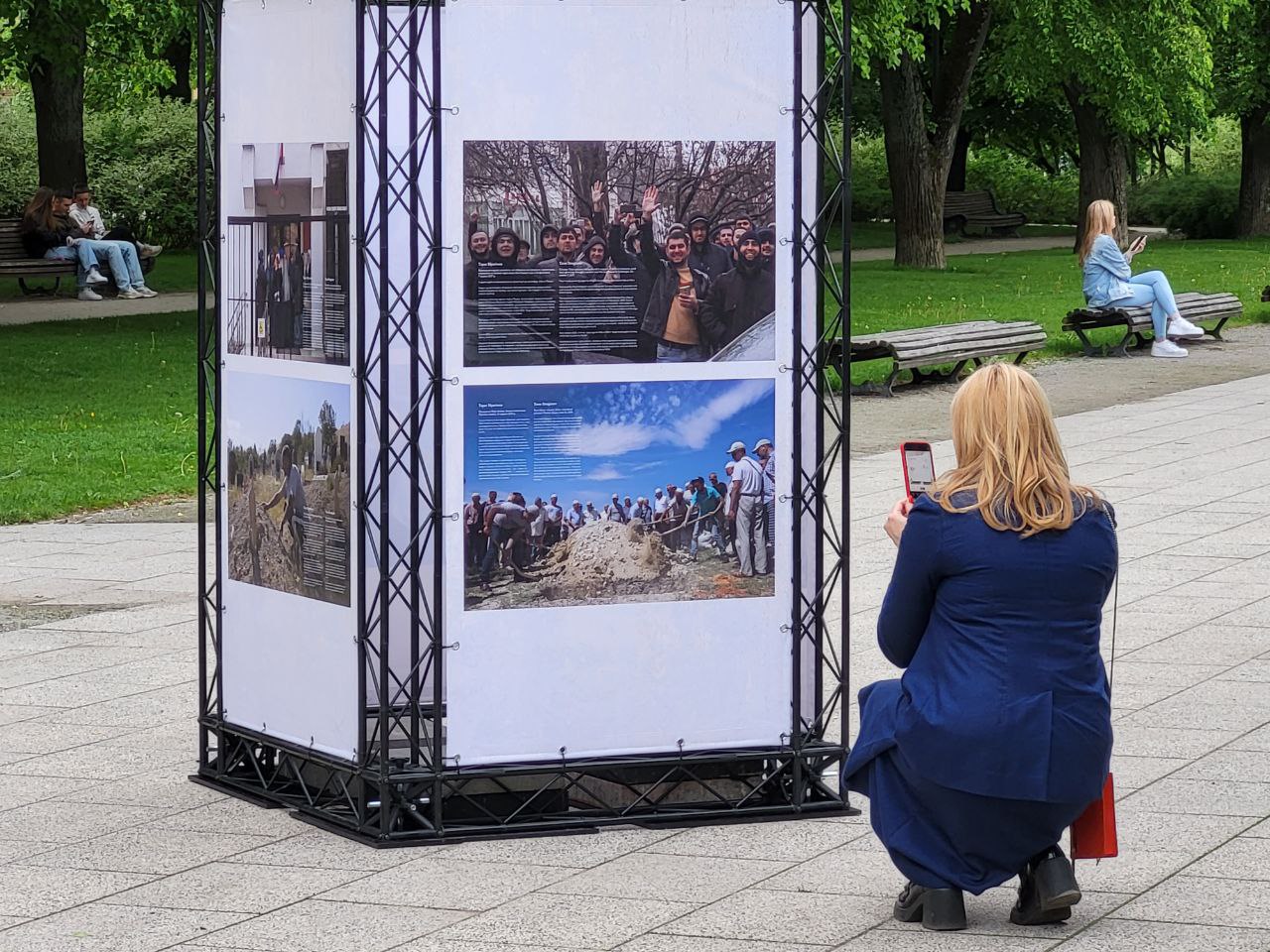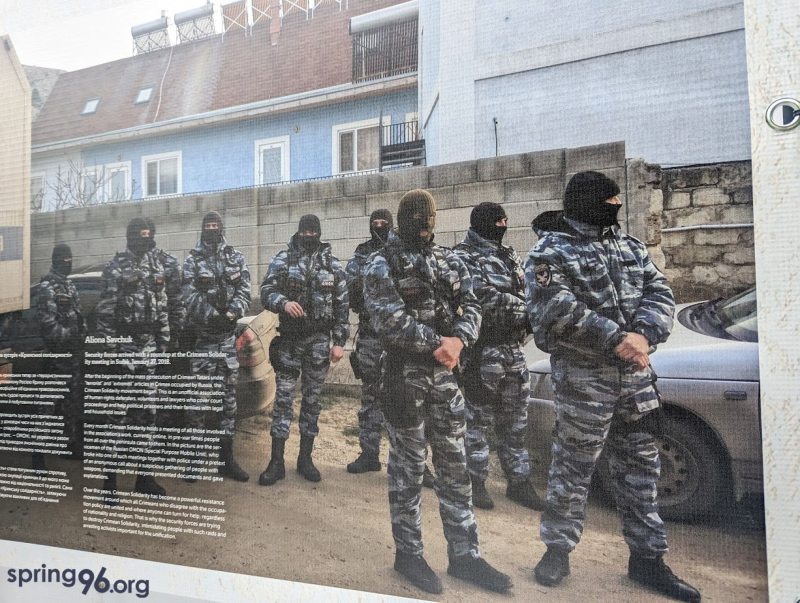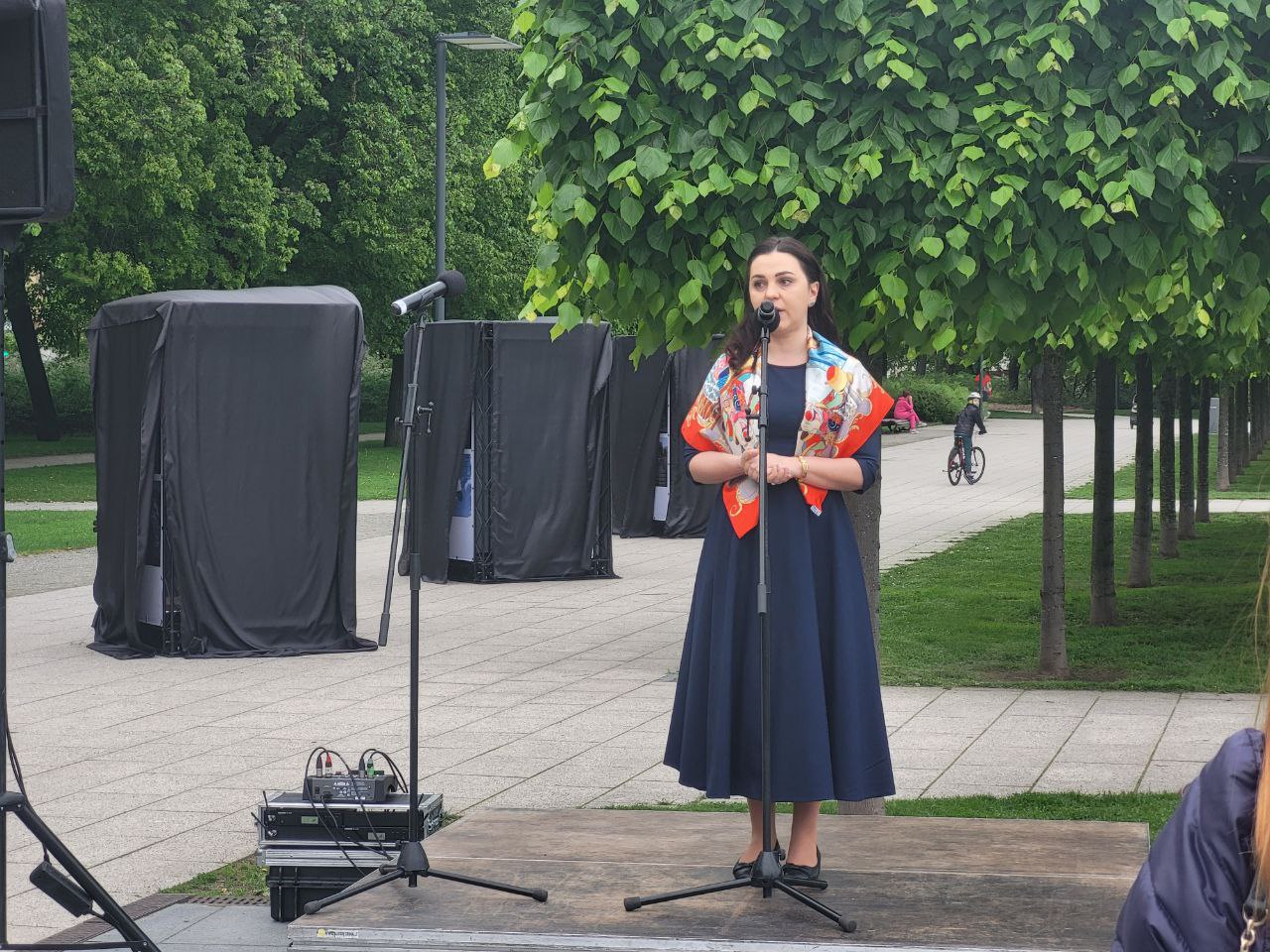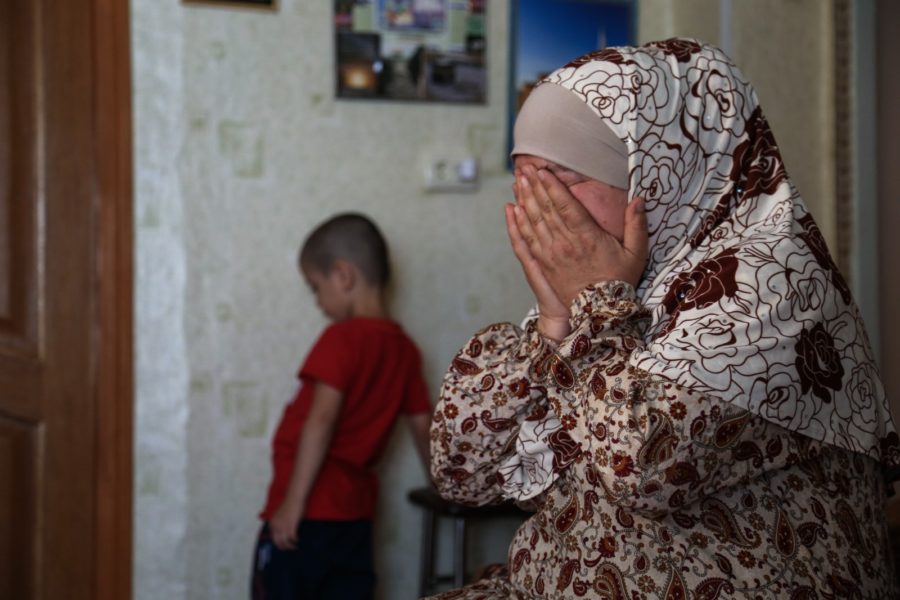In Vilnius, the exhibition was co-organised by Human Rights House Crimea, ZMINA Human Rights Centre, and Barys Zvozskau Belarusian Human Rights House, with the financial support of the Human Rights House Foundation in the framework of the House to House fund.
On 18 May, 1944, the Soviet government began the forcible deportation of Crimean Tatars from the peninsula to remote regions of the USSR. In total, more than 190,000 Crimean Tatars were deported. Many of them died on the way and in exile.
Following the 2014 Russian occupation of the peninsula, many Crimean Tatars are experiencing renewed persecution.

A Hybrid deportation
“Now, as the Crimean Tatars themselves say, a hybrid deportation is taking place,” said Alyona Savchuk, one of the three photojournalists behind the exhibition, during the opening. “Many men, arrested on trumped-up terrorist or extremist charges, are directly taken out of Crimea to the courts, and then penal colonies – scattered all over Russia. A large number of families tried to escape the forced mobilisation in Crimea already after the start of the full-scale Russian invasion of Ukraine, and also left the territory of Crimea. What is happening now is a new phase of the genocide of Crimean people.”

Also speaking at the opening, Tetiana Pechonchyk, Head of ZMINA said “This exhibition illustrates life in occupied Crimea, those realities that Crimean Tatar families live with today: these are politically motivated trials, these are parents who are behind bars, children who grow up without parents.”
“There was a feeling that all this [remained] in history, that we have already developed enough as humanity, and we will never repeat the mistakes that were made in the middle of the 20th century. But exactly 70 years have passed, and history repeated itself. Trouble came to Crimea again, people again were tortured, beaten, killed just because they wanted to be free and wanted to protect their rights,” said Maryia Sliaptsova, representative of the Barys Zvozskau Belarusian Human Rights House during the opening of the exhibition.
Crimea is an example of what Belarus can become
In 2018, representatives of Human Rights Houses from Azerbaijan, Ukraine, and Belarus undertook a mission to the occupied peninsula between 14-18 September 2018. Following the mission, the “Crimea: Breaking the wall of silence” report was released.
Reflecting on one of the quotes from a Belarusian participant of the mission, Sliaptsova continued “[for the Belarusian] it was important to participate in the mission not only as a human rights defender but also as a Belarusian because ‘Crimea is an example of what Belarus can turn into in such events: in the place of deployment of military bases, in a zone where people are deprived of the opportunity to protect their rights, in a zone where people are actually forbidden to identify themselves as Ukrainians.’”
“Unfortunately, these words have become a prophecy because after 2020 Belarusians who stood for free elections, for freedom of speech, for independence are now being tortured and beaten. Their freedom of speech has been taken away. Including that they cannot express support for Ukraine,” concluded Sliaptsova.
180 Crimeans are political prisoners (May 2023)

The full-scale war has had an impact on the situation with Crimean political prisoners, Tetiana Pechonchyk said:
“According to the latest data, 180 Crimeans are political prisoners today, 116 of them are Crimean Tatars. And before February 24, 2022, there were 120 political prisoners. That is, in a bit over a year of the full-scale Russian aggression, the number of political prisoners increased by a third. The pressure on lawyers increased, several were stripped of their licences. If earlier lawyers could speak and comment to journalists, now they are afraid. Plus there are a lot of administrative fines and arrests for anti-war speeches, for criticising the Russian army, even for singing Ukrainian songs.”
“We are grateful to the Belarusian Human Rights House for helping to tell these stories. And we understand that today it is also a very close story for the Belarusian people – because of the huge number of political prisoners and because of the situation in which the country is. And the blame for this situation is on the Russian Federation, just like in the case of Crimea,” concluded Pechonchyk.
Top photo by Taras Ibragimov, exhibited as part of “Stories from occupied Crimea”.
“Stories from the occupied Crimea” features the work of three photojournalists: Alina Smutko, Taras Ibragimov and Alyona Savchuk, who documented the life of families of political prisoners in occupied Crimea between 2014-2019 and helped to shed light on human rights violations. As a reprisal for their work, all three have been banned from entering Crimea for between 10 to 35 years.
The Exhibition was launched simultaneously at three locations: in Lukiškės Square in Vilnius, at Kyiv’s central railway station, and at the European Parliament in Brussels.
This story has been adapted from an article originally published by Viasna. Read the original in Belarusian here.
About HRHF’s House to House fund
Human Rights House Foundation’s House-to-House (H2H) fund provides financial and technical support to groups of two or more Human Rights Houses working in partnership to address common human rights issues in their communities. Find out more here.





